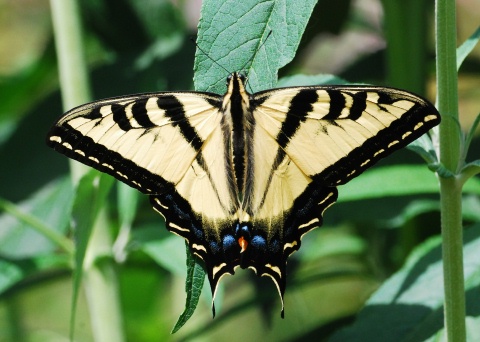
The time for weeding has arrived at Rootdown. I mean, we were weeding before this, but now we are really weeding. The hot, sunny weather, interspersed with a bit of rain here and there, and the long days as we approach the summer equinox means things are growing fast. The cultivated crops are growing fast and doing awesome too, but weeds have this way of always growing faster than the things the we are actually trying to grow. Their inherent vigour and strength is, in many ways, what makes us consider them weeds, and they can feel like the bane of an organic farmers existence.
Of course there is a lot of interesting things to ponder about weeds – such as how to reduce weed pressure on a farm, long term; or in a more permaculture line of thinking, how to make them work for you, why are they there, and what some of the benefits they may bring are. And while I think all of that is very interesting, and I enjoy seeing how people are experimenting with more natural ways of farming, I also know how much I love a well weeded bed of anything, and how much better annual crops grow when they aren’t competing with weeds for nutrients and water. I hope to be able to play with with some of those concepts in the future, but I am pretty sure weeding will always be an aspect of organic farming, and I am okay with that too. We are, after all, choosing to eat and therefore grow human-bred crops, and so some level of management between the cultivated and the wild is to be expected.
Almost all of the weeding at Rootdown is done with hand tools or with the ultimate hand tool, our fingers.

These long-handled beauties are designed to, if used properly, save your back, and maybe even make weeding enjoyable, at least some of the time. They all have their advantages, and are best used in different situations with different weeds – the loop hoe, for example, is fantastic in tightly planted beds (like salad mix) and with small, delicate seedlings (like carrots); while the stirrup hoe is great for pathways or wider spacing between rows. The usual order of operation is to hoe a bed, getting as close to the planted rows as possible, and then to go back and hand weed within the rows if necessary, which it usually is.
Sometime last week we pulled out the sharpener, and it was made very obvious to us all the benefits of a sharp hoe! It is a piece of advice I have read about in numerous books, and yet it is not so easy to put into practice when you are busy and in the field. However, it is well worth the effort to bring a sharpener out to the field with you, as a sharp hoe is much more effective than a dull one.

The only piece of weeding equipment used at Rootdown that I hesitate to call “manual” or a “hand tool” is the flame weeder. Blasting small, emerging weed seedlings with fire is hardly something one could call hand weeding, and yet the flame weeder is carried on a persons back, and is not tractor mounted (although those exist!). I think it comes down to scale – it is definitely not a hand tool, but this model is still something that has been designed with the small scale farmer in mind, and it is (sort of) human powered.
And while we have definitely been battling nature in the form of keeping the weeds at bay, there has also been a recent boom in the population of the native western tiger swallowtail butterfly on the farm.

We have seen them flitting here and there all over the place, and the other day when I went to put irrigation on the south field I noticed dozens of them congregating on the wet soil where we had previously irrigated.

With a little bit of research, I found out that these butterflies were “mud puddling,” a behaviour common in butterflies, but one also found in some other inspect species. The males land on certain moist substances, such as mud, carrion, or rotting plant matter, and suck up the liquids to obtain salts and other necessary nutrients. The males then transfer some of these nutrients to the females during mating. This enhances both reproductive success, and the survival rate of the ensuing eggs.
I also learned that western tiger swallowtails often lay eggs on trees such as poplar, or cottonwood, of which there are many along the edges of the fields at Rootdown.
Seeing butterflies indicates the presence of many other invertebrates in an ecosystem, which lends itself to a healthy and balanced ecosystem overall. Butterflies and other insects provide many environmental benefits such as pollination and they are part of a natural “checks and balances” pest control system. They are also an important part of the food chain for birds and bats, which also provide major benefits in the form of agricultural pest control. On top of these more tangible benefits, they are also beautiful, and bring a lot of joy to people when they see them. In short, it’s pretty cool to have them around!
And so while, on the one hand, we have been steadfastly beating nature back from the fields in the form of weeding, we are also helping the butterflies, the birds, and the bats and enhancing overall ecosystem health by preserving some wildness on the edges of the fields, and irrigating our domesticated crops.
Hurray for the coexistence of farmland and the natural world!

One thought on “On the Farm With the Weeds and a Little Slice of Wilderness”